
The short-range wireless communication methods in the automotive field are gradually shifting from proprietary RF technologies to standard protocol communication technologies, including Bluetooth Low Energy (BLE) technology.
In digital key applications, mutual authentication between mobile devices and vehicles is performed to complete operations such as entering the vehicle, starting the engine, locking the vehicle, or granting authorization. The Car Connectivity Consortium lists BLE as one of the three communication protocols for interaction between smart devices and vehicles in its released digital key technical specifications. The combination of UWB, NFC, and BLE technologies not only achieves the functions of traditional keys but also provides additional features such as key sharing, attribute control, and permission settings.
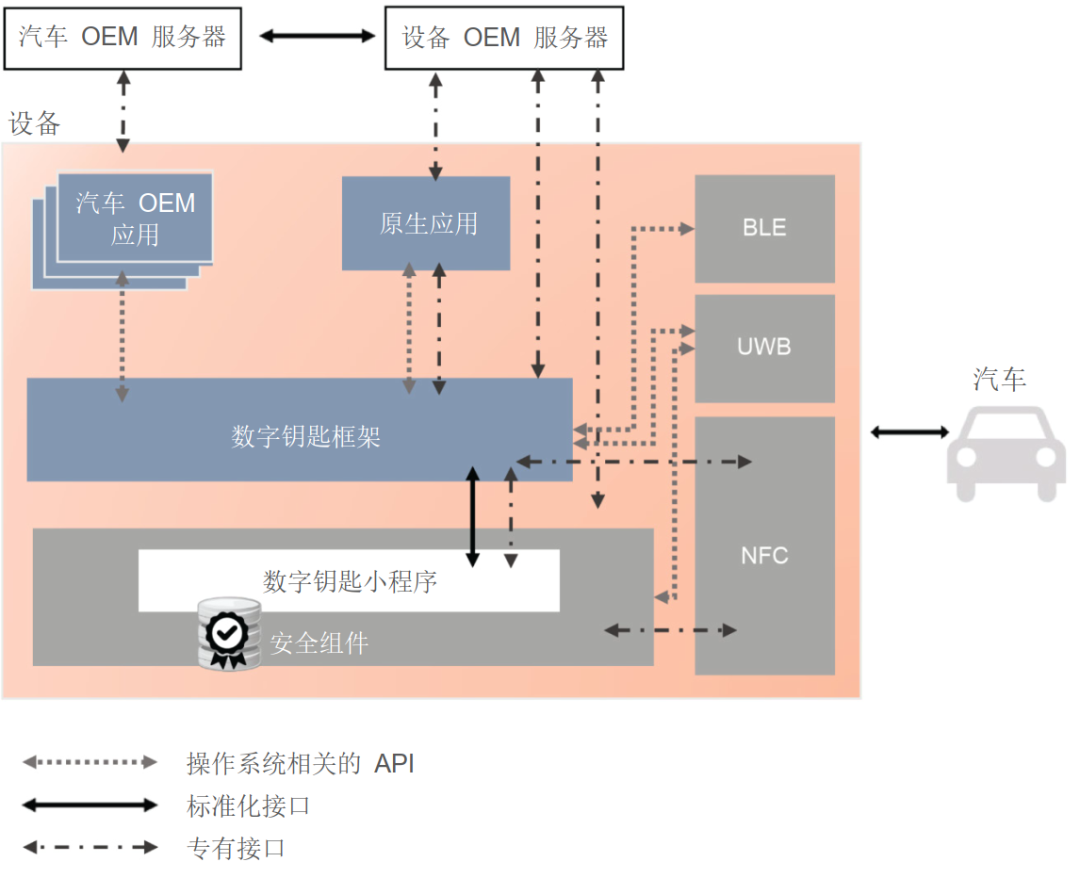
Figure 1: Digital Key Architecture
In Tire Pressure Monitoring Systems (TPMS), pressure sensors and temperature sensors installed in each tire measure tire pressure and temperature, and then transmit this information wirelessly to a central receiving module. The RF communication methods used in the past have limitations such as vulnerability to attacks and cracking, poor anti-interference capability of amplitude modulation technology, and frequency drift. Some manufacturers are gradually shifting their communication methods to BLE technology.
Introduction to BLE
01
Bluetooth, as a wireless communication technology, operates in the 2.4GHz free frequency band. Initially, it only included Classic Bluetooth technology for data exchange between two devices. Classic Bluetooth supports two major types of protocols: audio and data, commonly used in speakers, headphones, and traditional data transmission industries. With the emergence of new applications in healthcare, sports and fitness, and home entertainment, the Bluetooth specification version 4.0 introduced the BLE portion. Bluetooth is a protocol family, and the common functions and protocol layers that Bluetooth devices must implement are defined by the Core Specification. The Bluetooth specification is maintained by the Bluetooth Special Interest Group (SIG), and the latest version is 5.4, with the original specification available for free download on the SIG website.
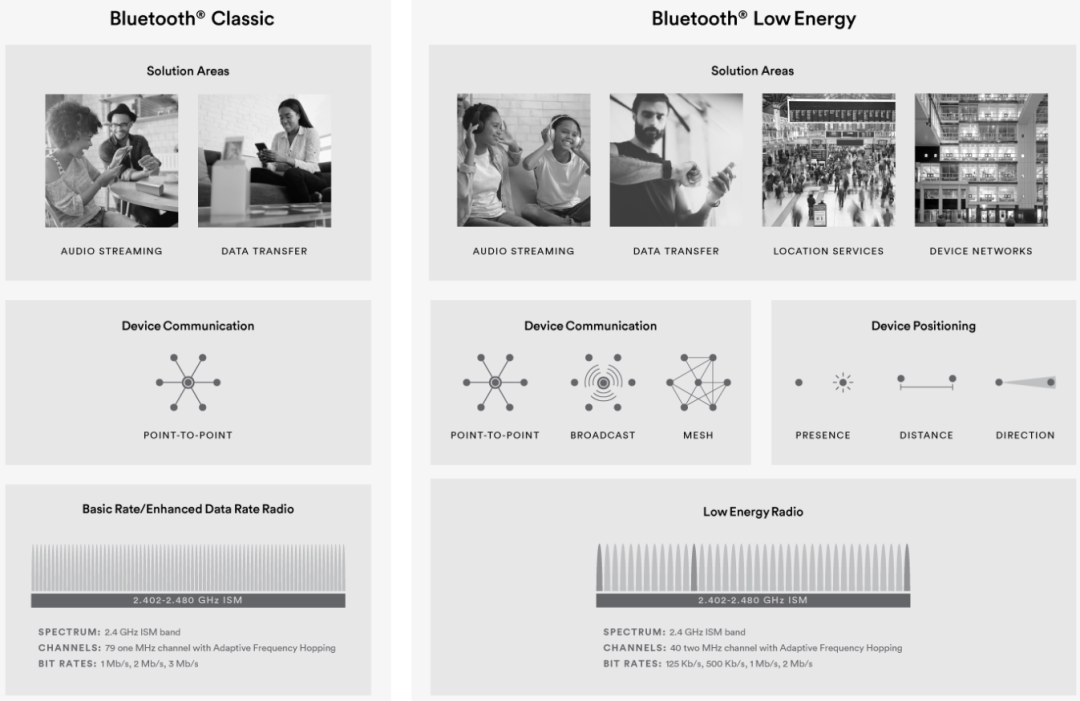
Figure 2: Overview of Bluetooth Technology
BLE, as a new Bluetooth technology, is not compatible with the previous Classic Bluetooth technology. BLE does not support audio protocols and is limited by data transmission speed, typically used in scenarios with smaller data volumes. Compared to Classic Bluetooth, it has advantages such as low power consumption, fast connection, and long range. Compared to proprietary RF technologies or other wireless communication technologies, BLE has the following advantages in vehicles:
>
Effective communication distance can reach several tens of meters, fully covering typical application scenarios such as parking lots;
>
Devices are always in an active state, requiring no power-up for application use, resulting in very low latency;
>
When not in use, devices enter sleep mode, allowing long-term operation at extremely low power consumption;
>
Wireless communication security is ensured through pairing authentication, secure connections, signatures, and other mechanisms;
>
Using frequency hopping and spread spectrum technology, it has strong anti-interference capabilities;
>
Smartphones generally support this protocol, facilitating interaction between vehicles and smartphones.
BLE Operating Mode
02
In the network topology of BLE devices, there are mainly two roles: Central and Peripheral. The Bluetooth protocol does not restrict device roles; the same BLE device can act as both a Central and a Peripheral. Peripheral devices, such as pressure sensors, can notify their presence by broadcasting advertising packets. Central devices, such as smartphones, can discover peripheral devices by listening to broadcast packets or by sending scan requests to obtain response data packets. When the central device needs to further communicate with the peripheral device for data reading and writing, it can initiate a connection request. After establishing a connection, the central device can send discovery requests to obtain the services and characteristics of the peripheral device.
The Generic Attribute Profile (GATT) of the peripheral device defines one or more services that can be provided, with each service containing one or more characteristics. Each characteristic has one or more attributes of Read, Write, or Notify. The central device can access the characteristic values of the peripheral device by sending read, write, or subscribe commands.
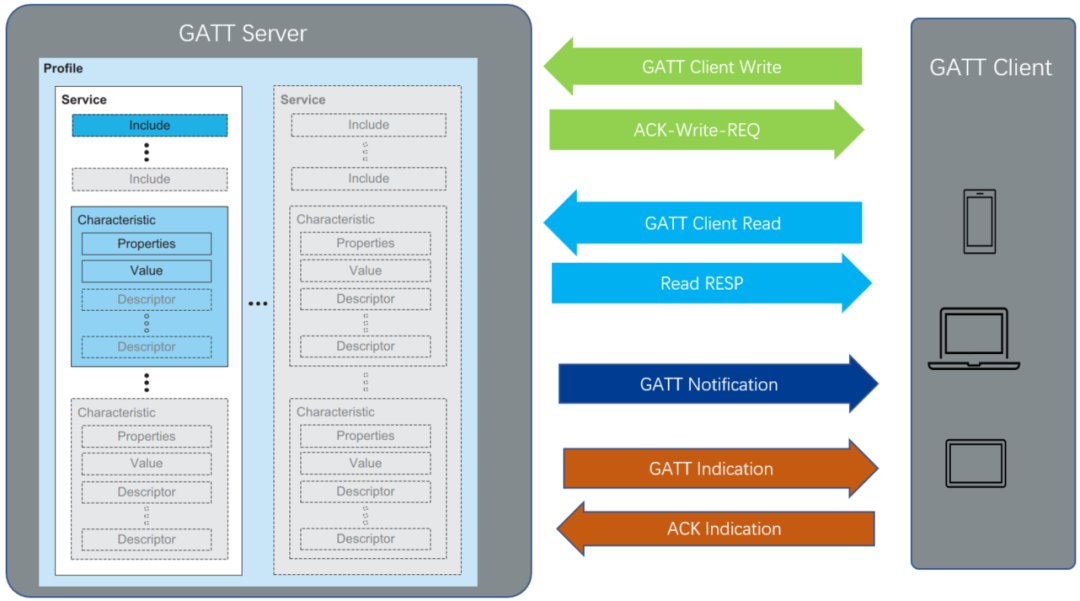
Figure 3: Read, Write, and Subscribe Characteristics
BLE Test Hardware VH4110
03
With the widespread application of IoT protocols in the automotive field, Vector has supported simulation, analysis, and testing of NFC, BLE, and WLAN/LAN communication since the release of CANoe version 15, responding to customer needs, and launched the VH4110 hardware device (also known as IoT Enabler) that supports wireless communication and protocol analysis. The VH4110 can serve as an IP communication-based router, connecting CANoe with the unit under test via WLAN/LAN, or it can connect with the unit under test using non-IP wireless communication technologies (such as BLE and NFC).
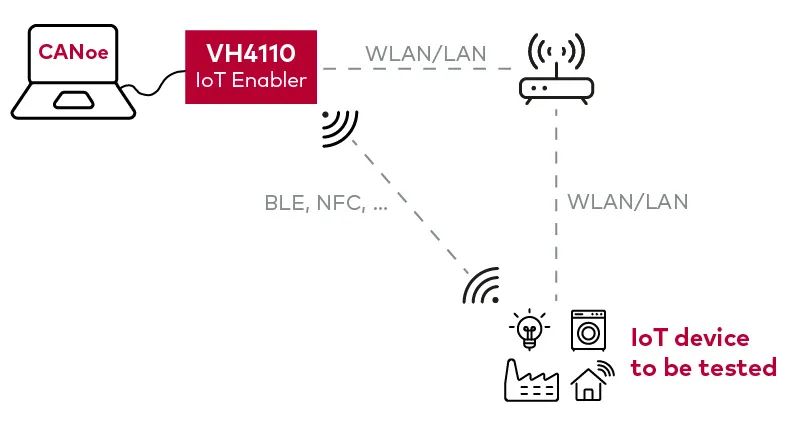
Figure 4: VH4110 Connection Schematic
VH4110 connects to the host running CANoe via USB Type-C. The data transmitted only interacts with CANoe, and users do not need special network permissions or to modify firewall configurations on the host. No drivers need to be installed during use, and no additional CANoe Option is required. VH4110 provides four USB interfaces for inserting corresponding USB adapters for wireless communication.
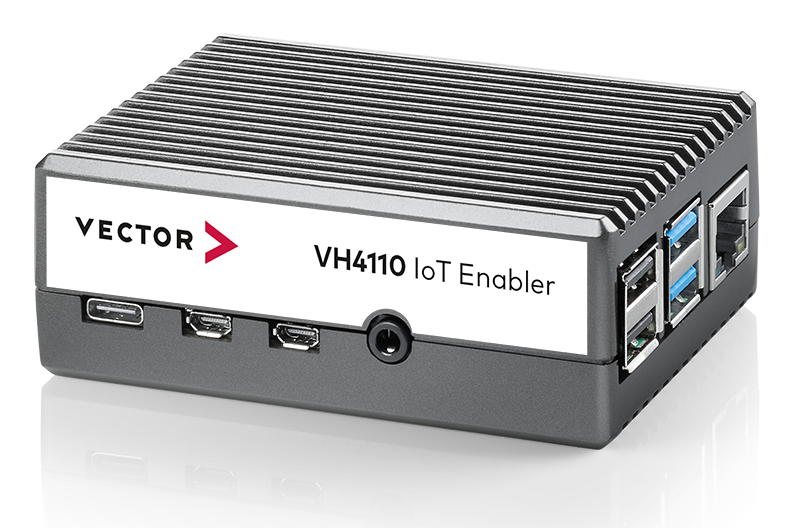
Figure 5: VH4110 Physical Image
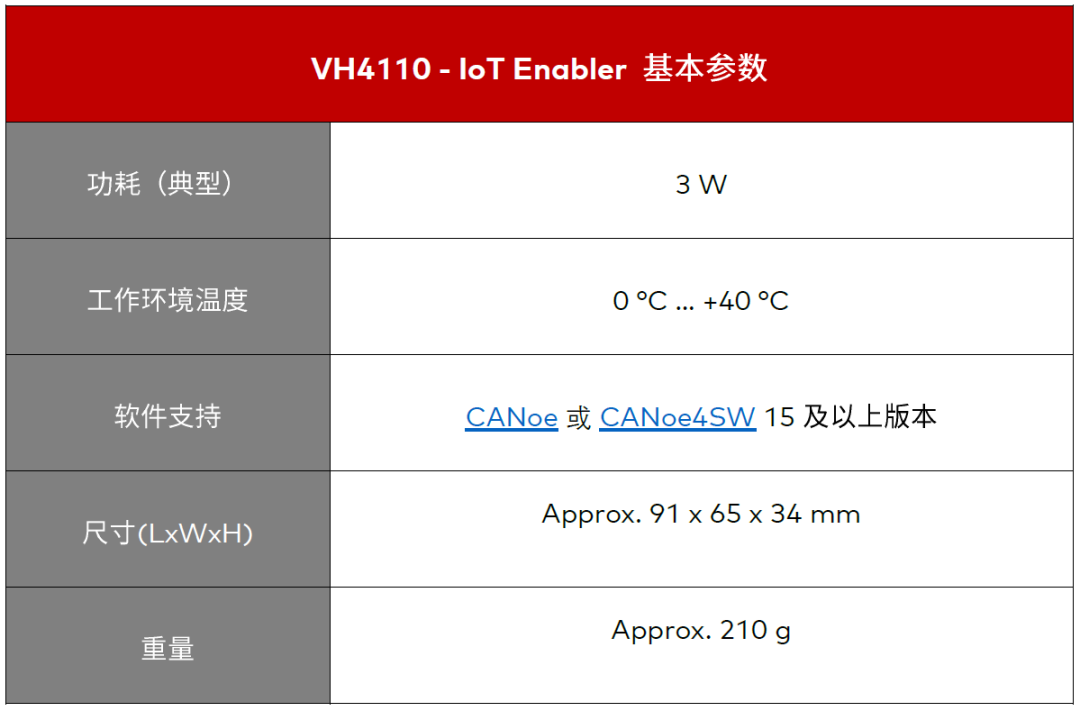
Configuration Steps in CANoe
04
1.
Open CANoe and create a new project based on the Distributed Objects template.

Figure 6: New CANoe DO Project
2.
Open the Communication Setup interface, and create a vCDL file containing the IoT Enabler communication interface as shown in Figure 7.
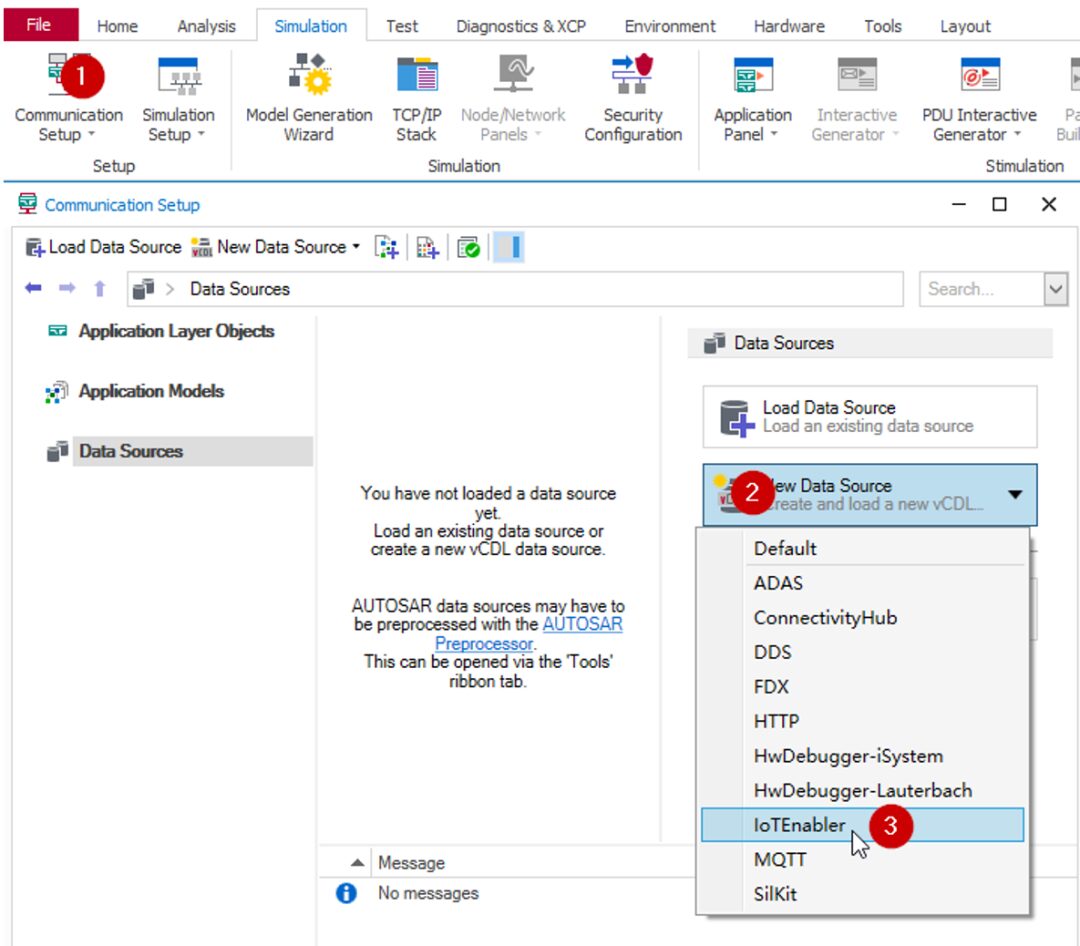
Figure 7: New BLE Communication Interface Description File
3.
After setting the save path and filename for the vCDL file (note that the path and filename cannot contain Chinese or special characters), open the vCDL file and edit it according to the instructions in Figure 8.
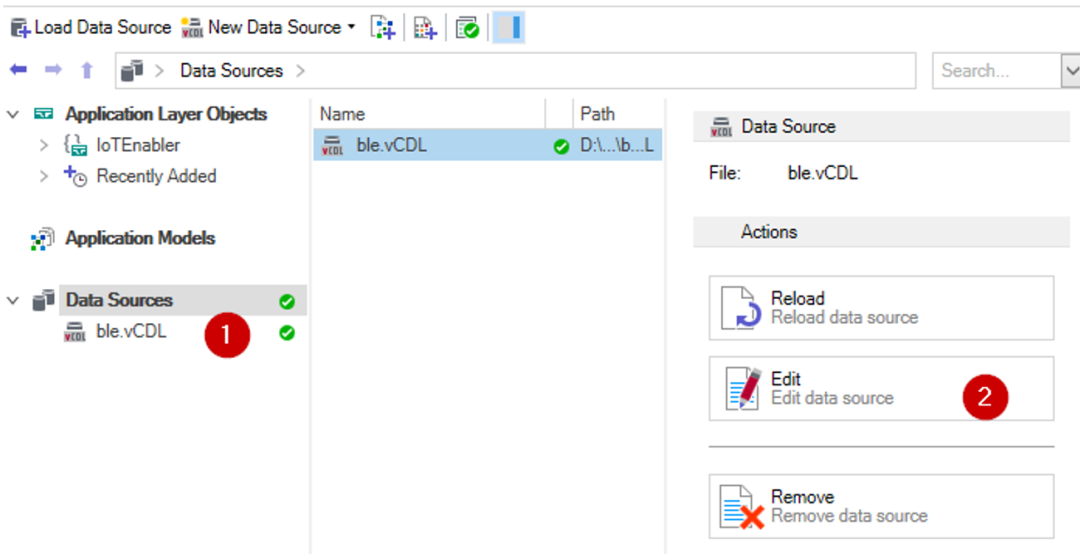
Figure 8: Edit BLE Description File
vCDL (Vector Communication Description Language) is a language used in the CANoe Communication Concept to describe communication objects, defining and configuring Distributed Objects (DO) in a simple text-based manner. In the vCDL template created based on the IoT Enabler application, the predefined IoT Enabler-related interfaces are referenced through the import module “IoT Enabler” and automatically add the necessary statements. Users only need to instantiate the required BLE interfaces through the keyword object. In CANoe, both central and peripheral devices can be simulated by instantiating different interfaces, as shown in Figure 9.
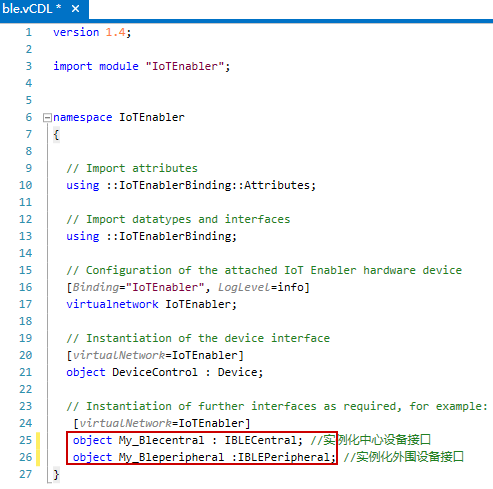
Figure 9: Add BLE Interface Information
4.
In the Application Panel, you can see the Methods available for calling in the BLE interface. After filling in the parameters for the Method you need to call, you can issue the corresponding command by clicking Call. If you need to complete an automated process, you can also call these commands in CAPL.
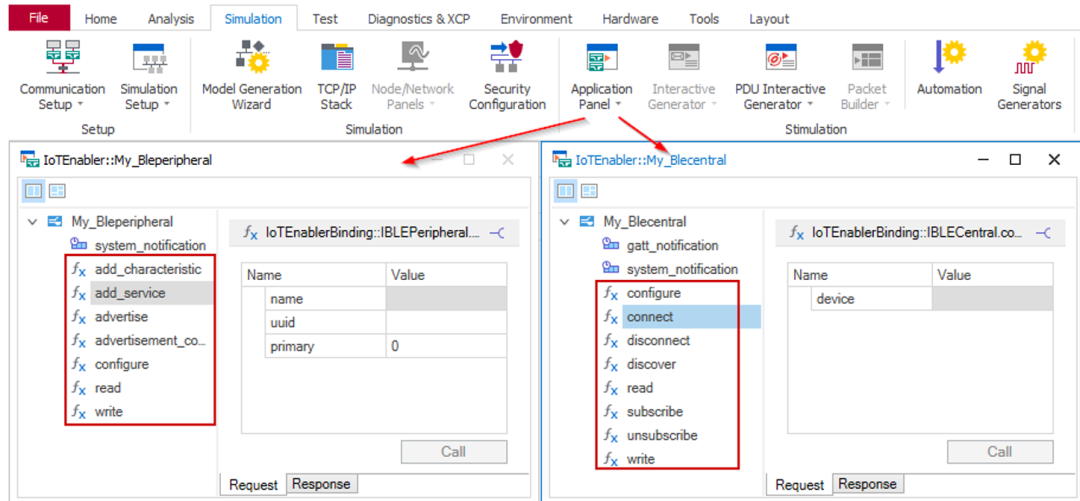
Figure 10: Callable BLE Commands
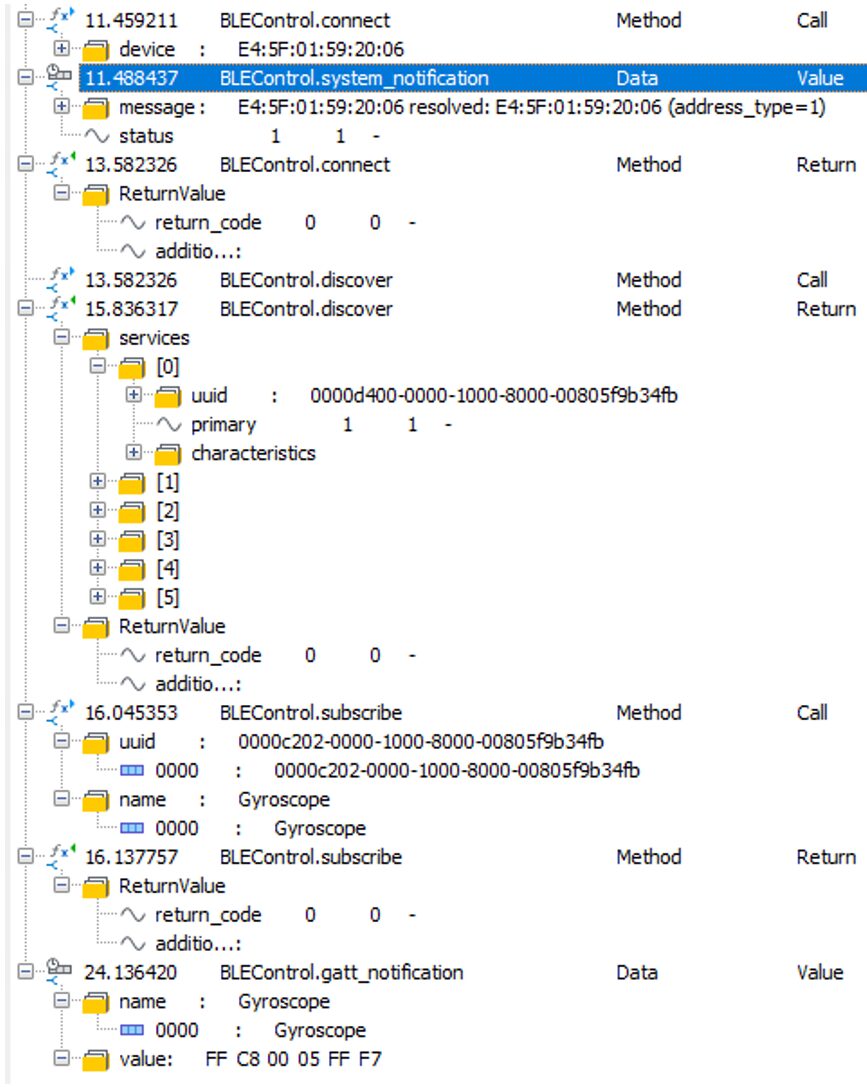
Figure 11: BLE Messages in CANoe
END
Recent Online Seminars
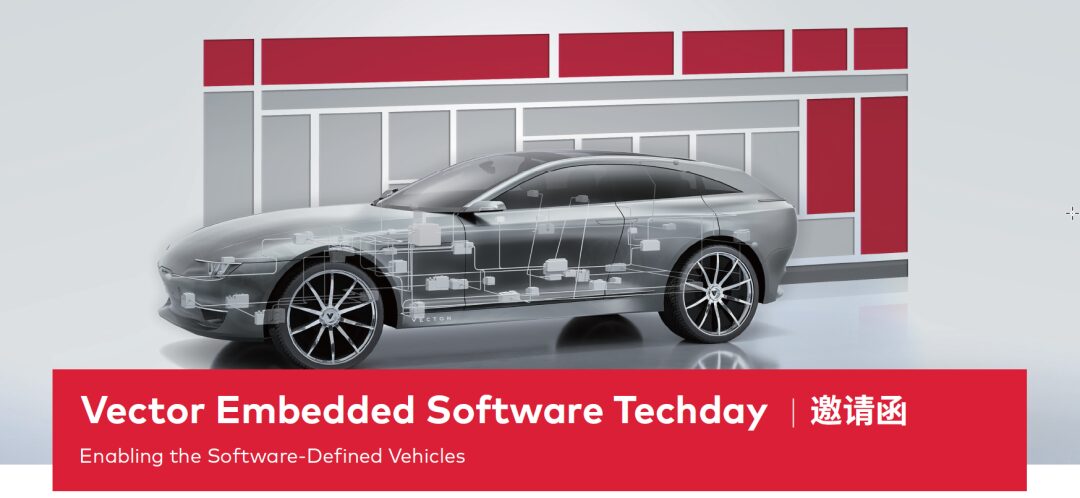


Vector China
WeChat ID | Vector
Bilibili | Vector Automotive Technology
021-2283 4688